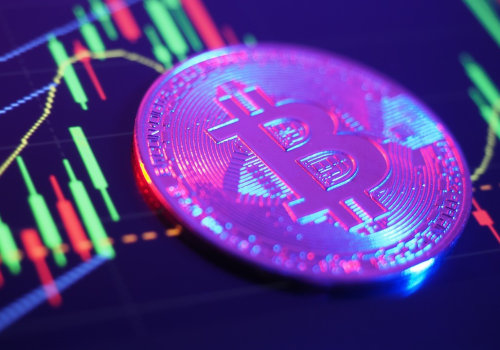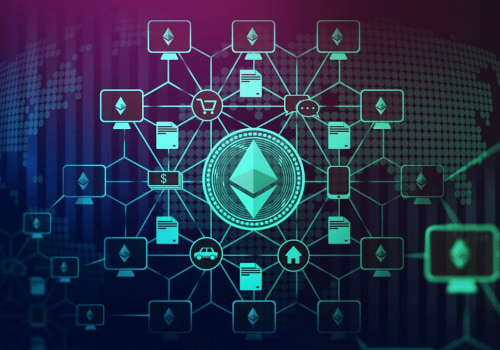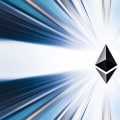In recent years, there has been a significant rise in the popularity of NFTs (non-fungible tokens) in the world of digital assets. These unique digital assets, built on blockchain technology, have captured the attention of artists, collectors, and investors alike. But what exactly are NFTs and why are they causing such a buzz? In this article, we will delve into the world of NFTs and explore their various forms and uses. From music and audio files to digital art and collectibles, we will cover the wide range of possibilities that NFTs offer.
So buckle up and get ready to enter the exciting world of NFTs!In this article, we will dive into the world of NFTs and explore the many possibilities and potential that they hold. Whether you are interested in investing in cryptocurrency, learning about blockchain technology, or exploring decentralized finance, NFTs are a hot topic that you won't want to miss. We will break down the basics and provide a comprehensive guide to understanding NFTs and their various applications. First, let's cover the basics of digital assets and how they relate to NFTs. Digital assets are any form of media or data that exist in a digital format.
This can include music and audio files, videos, images, documents, and more. With the rise of technology and the internet, digital assets have become an integral part of our daily lives. Now, let's dive into the world of cryptocurrency. Cryptocurrency is a digital or virtual currency that uses blockchain technology for secure financial transactions. The most well-known cryptocurrency is Bitcoin, but there are many others such as Ethereum, Litecoin, and Dogecoin.
People can invest in these currencies by buying and holding them, or by trading them on cryptocurrency exchanges. Next, let's discuss blockchain technology and its various applications. Blockchain is a decentralized digital ledger that records transactions across a network of computers. It is the underlying technology behind cryptocurrencies, but it has many other potential uses such as smart contracts and decentralized finance. Smart contracts are self-executing contracts with the terms of the agreement between buyer and seller being directly written into lines of code.
Decentralized finance (DeFi) refers to financial applications built on blockchain networks that aim to disrupt traditional financial systems. We also need to touch on digital wallets and tokenization, two important aspects of the NFT world. Digital wallets are software programs that store your digital assets, such as cryptocurrencies. They provide a secure way to manage and transfer your digital assets. Tokenization is the process of creating a digital representation of a real-world asset on a blockchain.
This allows for the ownership and transfer of these assets to be recorded and verified digitally. Throughout this article, we will use real-life examples to help illustrate these concepts and make them easier to understand. By the end, you will have a better understanding of the world of NFTs and the potential they hold for transforming various industries. So, stay tuned for our next article where we will dive deeper into specific types of NFTs and their use cases.
Decentralized Finance
Decentralized finance, or DeFi, is a movement within the cryptocurrency and blockchain space that aims to create a decentralized financial system. It allows for the creation of financial services and applications without the need for traditional intermediaries such as banks or brokerages. This concept is particularly important for NFTs because it aligns with the decentralized nature of blockchain technology.By utilizing DeFi protocols, NFTs can be created, bought, and sold without the involvement of centralized entities. This not only reduces costs and improves efficiency but also provides a more secure and transparent environment for NFT transactions. Furthermore, DeFi offers a wide range of use cases for NFTs. From lending and borrowing to asset management and insurance, NFTs can be integrated into various DeFi protocols to create new and innovative financial products. This opens up endless possibilities for NFT holders and creators, making them even more valuable and versatile.
Digital Wallets and Tokenization
In the world of NFTs, digital wallets and tokenization play a crucial role.Digital wallets, also known as cryptocurrency wallets, are virtual storage spaces that hold your NFTs and other digital assets. These wallets use blockchain technology to securely store and transfer your assets without the need for a central authority. This makes them decentralized and resistant to hacking or fraud.Tokenization, on the other hand, is the process of converting real-world assets into digital tokens that can be traded on the blockchain. In the case of NFTs, tokenization allows for the creation of unique and verifiable digital assets that cannot be duplicated or counterfeited.
This process also enables fractional ownership of assets, making it easier for investors to buy and sell shares of high-value assets.In the world of NFTs, digital wallets are used to store and manage your NFTs, while tokenization allows for the creation and trading of these unique digital assets. Together, they provide a secure and efficient way to buy, sell, and manage NFTs on the blockchain.
Investing in Cryptocurrency
Investing in cryptocurrency can be done in a variety of ways, depending on your goals and risk tolerance. One of the most common ways to invest in cryptocurrency is through buying and holding, also known as 'HODLing'. This involves purchasing a certain amount of a particular cryptocurrency and holding onto it for a long period of time, with the hope that its value will increase over time. Another popular method is trading, where investors buy and sell cryptocurrencies in order to make a profit from market fluctuations.This requires a deeper understanding of the market and can be more risky, but can also lead to higher returns. There are also options to invest in cryptocurrency through mining, staking, and lending platforms. Mining involves using computing power to verify transactions on a blockchain network and earn rewards in the form of cryptocurrency. Staking involves locking up your cryptocurrency as collateral to help secure a blockchain network and earn rewards. Lending platforms allow individuals to lend their cryptocurrency to others for interest. It's important to do your own research and understand the risks involved before investing in cryptocurrency.
Make sure to choose a reputable exchange or platform and always be mindful of security measures to protect your investments.
The Basics of Digital Assets
In the world of NFTs, digital assets are becoming increasingly popular as a way to represent ownership of unique and valuable items. These digital assets can include anything from art, music, videos, and even tweets. They are created using blockchain technology, which is a decentralized ledger that verifies ownership and provides a secure way to transfer ownership. In relation to NFTs, digital assets are the items that are being bought, sold, and traded on the blockchain.They are unique and cannot be replicated or duplicated, making them highly valuable in the digital world. NFTs take digital assets to the next level by adding a layer of authenticity and scarcity. By creating a one-of-a-kind digital asset and verifying its authenticity through blockchain technology, NFTs are able to provide a way for creators to monetize their work and for buyers to own a truly unique piece of digital content. This has opened up a whole new world of possibilities for artists, musicians, and other creators who were previously limited in their ability to monetize their digital creations.
So, in short, digital assets are the building blocks of NFTs. They are the unique and valuable items that are bought and sold on the blockchain using cryptocurrency. As we continue to explore the world of NFTs, it is important to understand the basics of digital assets and how they play a crucial role in this emerging technology.
Exploring Blockchain Technology
In this fast-paced digital world, technology is constantly evolving and revolutionizing the way we do things. One of the most talked-about technologies in recent years is blockchain.But what exactly is it and how is it used?Blockchain is a decentralized digital ledger that records transactions across a network of computers. It was originally developed for the cryptocurrency Bitcoin, but its potential uses go far beyond that. The main purpose of blockchain is to create a secure and transparent system for recording and verifying transactions. One of the key features of blockchain is its decentralized nature. This means that there is no central authority controlling the network, making it more secure and less susceptible to fraud.
Each transaction is recorded as a block and linked together in a chain, creating an immutable record that cannot be altered or deleted. So how is blockchain used? It has a wide range of applications in various industries, including finance, supply chain management, healthcare, and even music and art. In the world of NFTs, blockchain is used to verify the ownership and authenticity of digital assets, making them unique and valuable. Blockchain technology also offers benefits such as increased efficiency, lower costs, and improved transparency. By eliminating intermediaries and automating processes, transactions can be completed faster and with lower fees. And because all transactions are recorded on the blockchain, there is a high level of transparency, reducing the risk of fraud. In conclusion, blockchain technology has the potential to disrupt many industries and transform the way we do things.
Its decentralized nature, security, and transparency make it an attractive option for businesses and individuals alike. As we continue to explore the world of NFTs, it's important to understand the role that blockchain plays in this exciting new market. In conclusion, NFTs have revolutionized the way we think about digital assets and their value. With their unique features and potential for growth, it is no wonder that they have captured the attention of investors, tech enthusiasts, and artists alike. As the world continues to embrace NFTs, it is important to stay informed and educated on this exciting new technology.
We hope this article has provided you with a comprehensive overview of NFTs and their many applications.







